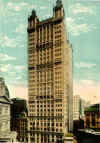 |
New York Architecture Images-Seaport and Civic Center THE PARK ROW BUILDING Landmark
119m / 391ft, 30 floors |
|
architect |
Robert Henderson Robertson |
|
location |
15 Park Row |
|
date |
1896-1899 |
|
style |
Beaux-Arts |
|
construction |
118,9m / 391.0ft, 30
floors, steel structure This 32-storey, twin-domed building rises to the height of 117 m; it took the title of the world's tallest building from the neighbouring, 26-storey St. Paul Building (95 m), completed to the "Newspaper Row" only a few months earlier. The horizontally divided facade of limestone and brick is mainly decorated by balconies and ornamental ledges, along with four female sculptures on the rusticated base. The twin domes, originally functioning as observatories, are topped further by smaller, copper-clad domes. The building features twin courtyards on the Ann Street side, allowing as much natural light into the building's interior as possible. |
|
type |
Office Building |
|
|
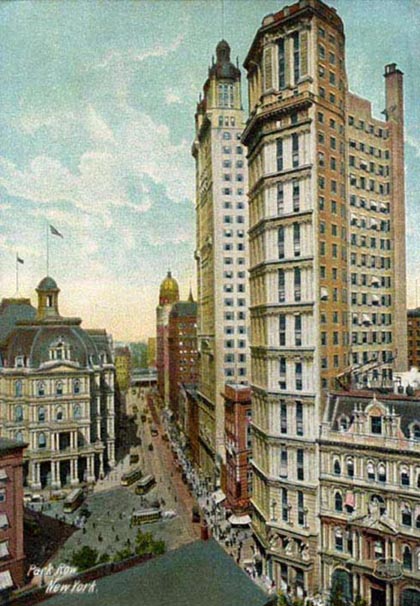 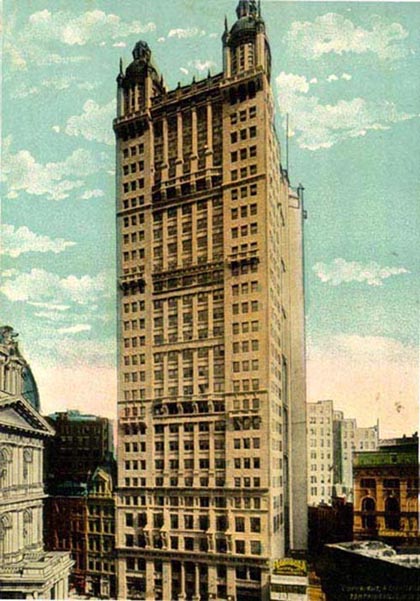 |
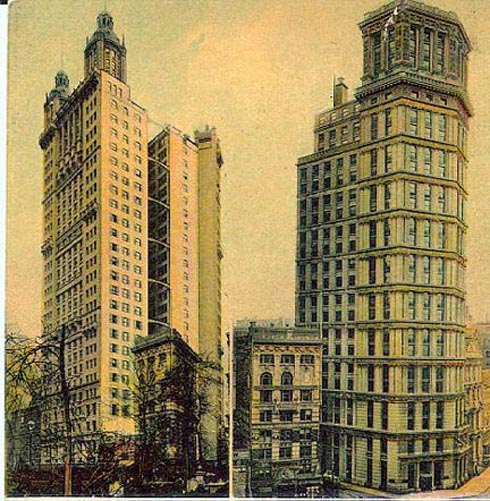 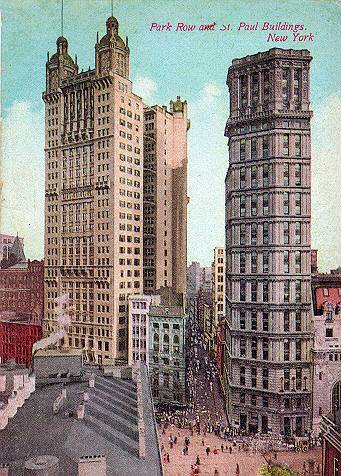 |
|
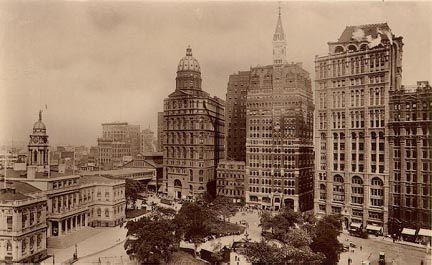 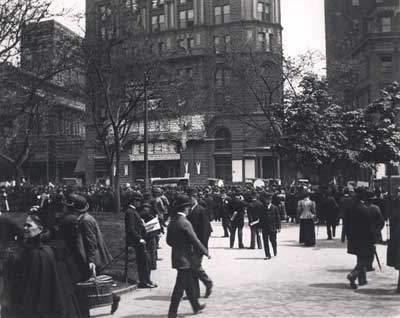 |
|
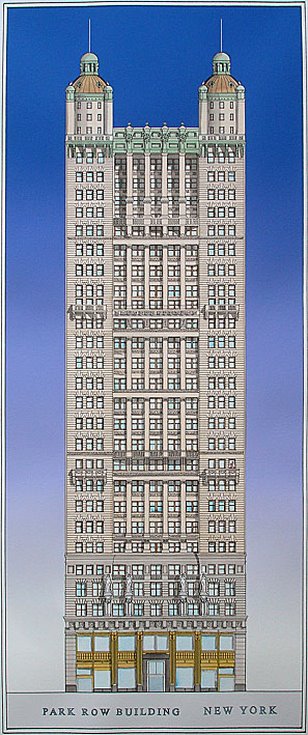  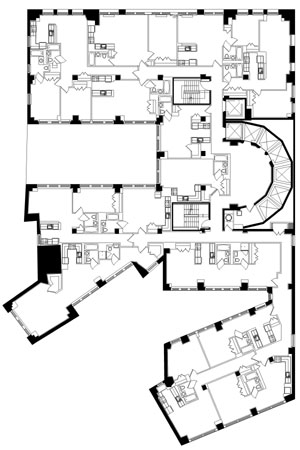 |
|
| Rendering copyright Simon Fieldhouse. Click here for a Simon Fieldhouse gallery. | |
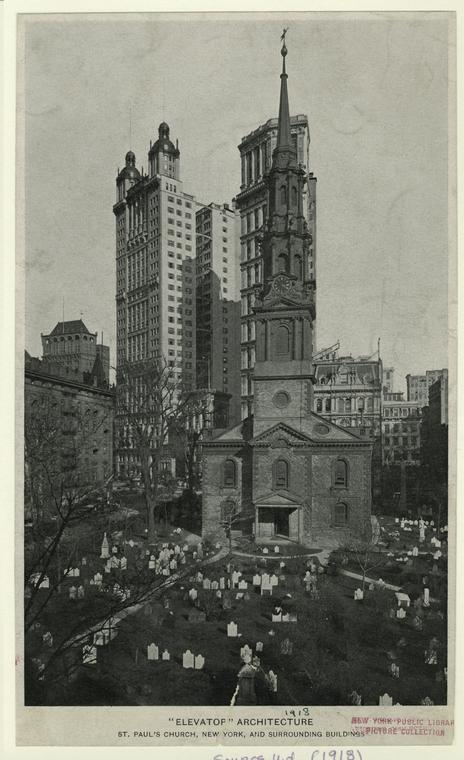 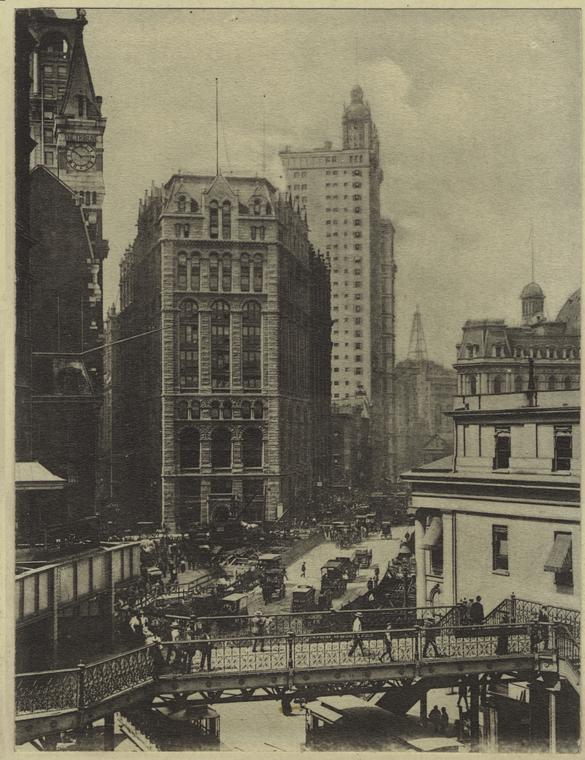 |
|
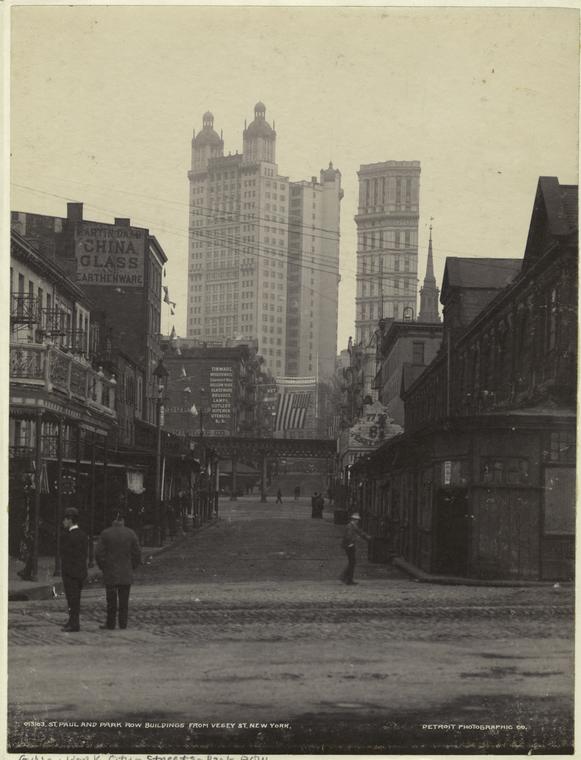 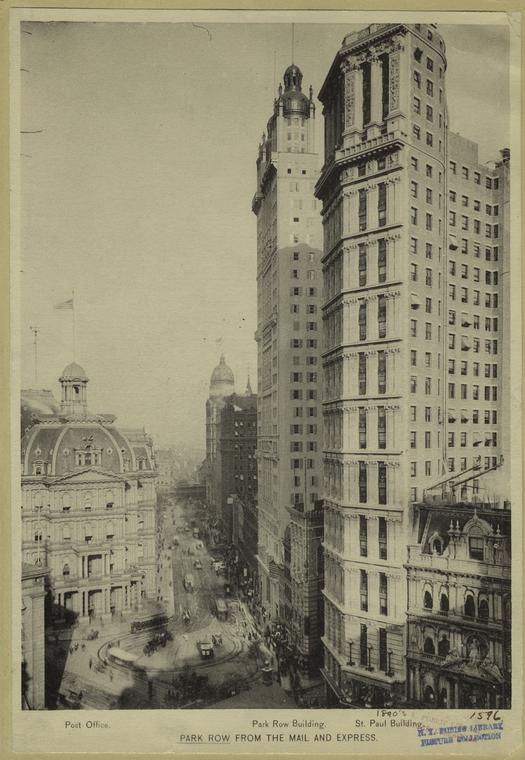 |
|
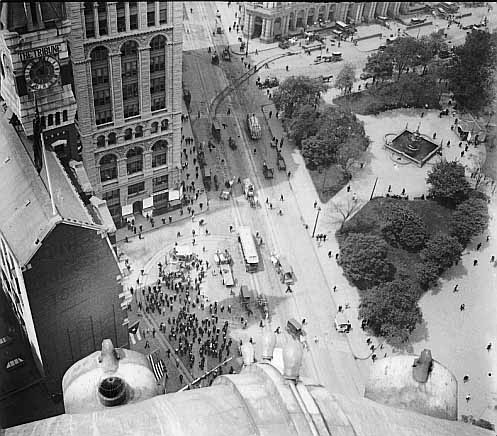 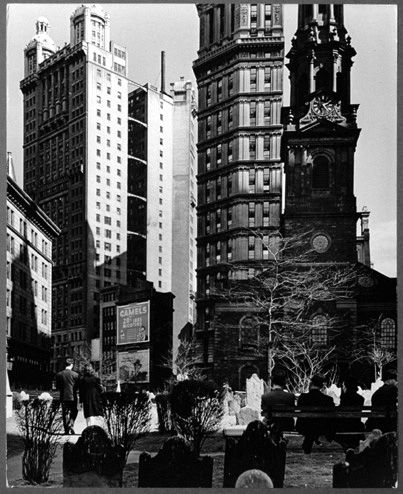 |
|
 |
|
| The 30-story Park
Row Building was the tallest office building in the world from the time of
its completion until the completion of the Singer Building in 1908. Built as
a speculative office building by a syndicate of investors lead by August
Belmont (also the entrepreneur behind the Interborough Rapid Transit Company
(IRT), a private company responsible for the building and operation of the
original subway line) the office block originally accommodated 950 offices
and over 4,000 workers. It exploited the newly developed all steel-skeleton
technology. The syndicate bought and consolidated seven smaller lots to
create this large but very irregularly shaped site which lacked the corner
lot. The exterior lacks the soaring profile and slender tower of the office
buildings that would take the title of tallest building in the next decade,
the Singer Building, Metropolitan Life Tower and Woolworth Building. The
most distinctive elements of its design are the two three-story cupolas and
four life-sized sculpted figures projecting from the fourth floor of the
Park Row front. Bibliography Here are some particularly useful and amusing volumes to consult on the high-rise history of downtown: Chase, W. Parker. New York 1932: The Wonder City. First published New York: Wonder City Publishing, 1932. Reprint: New York: New York Bound, 1983. Dolkart, Andrew. Forging a Metropolis. New York: Whitney Museum of American Art, 1990. Published in conjunction with the exhibition Forging a Metropolis, Whitney Museum of American Art, Downtown at the Federal Reserve. Dolkart, Andrew and Steven Wheeler. Touring Lower Manhattan. New York: New York Landmarks Conservancy, 2000. Landau, Sarah Bradford and Carl Condit. The Rise of the New York Skyscraper: 1865-1913. New Haven: Yale, 1996. Stern, Robert A.M., Thomas Mellins, and David Fishman. New York 1880: Architecture and Urbanism in the Gilded Age. New York : Monacelli Press, 1999. |
|
|
notes |
PARK ROW BUILDING, 15 Park Row (aka 13-21 Park Row, 3 Theatre Alley, and 13
Ann Street), Manhattan. Built 1896-99; architect R. H. Robertson.
Landmarks Preservation Commission. Designated June 15, 1999; LP-2024 Summary The 30-story, 391-foot-high Park Row Building was the tallest building in New York City and one of the tallest structures in the world between 1899, the year of its completion, and 1908. Located on Park Row across from City Hall Park, the Park Row Building remains, by virtue of its height and twin cupola-topped towers, one of the most distinctive buildings in lower Manhattan. It is one of several surviving late nineteenth-century office towers on a street that became known as Newspaper Row, the center of newspaper publishing in New York City from the 1840s to the 1920s. The building housed the offices of the Associated Press news agency which had been incorporated in New York in 1900, as well as the headquarters of August Belmont's Interborough Rapid Transit Company. The building's architect, R. H. Robertson, who was prominent for his institutional and commercial buildings, designed the Park Row Building using a number of classical elements, including four large sculpted figures set on overscaled brackets, huge columns and pilasters, as well as several projecting ornamental balconies. The two towers that rise above the crowning cornice are capped by ornamented domes which immediately distinguished this structure when it was added to the skyline of New York City at the turn of the century. Early twentieth-century artists admired the shape of the Park Row Building; Alvin Langdon Coburn and Charles Sheeler featured it in their photographs. The building remains in use as a commercial office building. Park Row or Ivins Syndicate Building Height: 386 feet (118 meters) to cornice Original owners: William Mills Ivins, head of investment syndicate Architect: R.H. Robertson Engineer: Nathaniel Roberts Constructed from 1896-99 The Park Row Building still stands today facing City Hall Park in lower Manhattan. Commissioned in 1896 by William Mills Ivins, the head of an investment group, the structure was built as speculative office space. It rises 386 feet to its cornice and 391 feet to the lanterns placed atop the structure; counting the four stories in the lanterns, the building is 30 stories tall. The interior could accommodate up to 1,000 offices, and was the home of the first IRT subway headquarters. Under the direction of architect R.H. Robertson and engineer Nathaniel Roberts, the building was under construction for over three years. The facade of the Park Row Building was a tall rectangle divided into six horizontal sections, with twin cupolas crowned in copper adding to the height. The design was little loved by contemporary critics who termed the towers "insignificant terminations which add nothing," and noted that in their proximity, the Park Row and St. Paul Buildings "stand and swear at each other" across Ann Street. Text by Melissa Matlins Once the tallest building in the world, 15
Park Row still graces Manhattan’s skyline with its elegant form looking
out onto City Hall Park. Owned by J&R Music World the building’s base 10
floors shall remain commercial offices for the electronics retailer, the
next 15 floors make up the residential conversion and the top 3 floors
are for private use. In front of Pace University, at the intersection of Park Row, Spruce Street, and Nassau Street, stands a statue of Benjamin Franklin. That and some fine old buildings are the only vestiges of Newspaper Row, once the bustling home to New York's press. Franklin's statue, erected when the intersection was called Printing House Square, was a tribute to the Founding Father's career as editor, publisher, and printer of The Pennsylvania Gazette and Poor Richard's Almanac. Crossing the hectic traffic corridor that is Park Row today can be frightening despite the benign presence of City Hall and other handsome buildings. As with South Street, old photographs give the best sense of its former energy and color. Pictures from different decades of the nineteenth century show that Newspaper Row changed at a dizzying pace, even by New York standards. The New York Times outgrew its headquarters at 41 Park Row after only thirty-two years. Its second building, erected in 1889, still stands. The gold-domed World Building at Frankfort Street, and the Tribune Building at Spruce, which dominate so many old views of the street, are long gone. But many fine structures of the day still line Park Row and the little streets to its south and east. Immigration and commerce sparked the city's nineteenth century growth, and its publications kept pace. Then, as now, New York supported an enormous foreign-language press and was home to many special-interest journals and trade publications. Most were published on or near Park Row. A photo from about 1875 shows the Portuguese O Novo Mundo sharing space with the Times in its old building. Next door were the Scottish American Journal, The World, and The Coal and Iron Record, among others. The largest foreign-language paper was the New Yorker Staats-Zeitung, which served the city's huge late-nineteenth century German-speaking population from a mansard-roofed building on the southern portion of the present Municipal Building site. Its predecessor, the Tryon Row Buildings, housed The Sentinel and Freeman's Journal, an Irish nationalist paper that published from 1840 to 1918. The history of journalism in New York is proud but turbulent. In 1735, John Peter Zenger was acquitted of seditious libel for criticizing the colonial government in his New-York Weekly Journal, establishing an early and firm foothold for a free American press. Less beneficial to society were the "yellow journalism" wars between Joseph Pulitzer's New York World and William Randolph Hearst's New York Journal, which led to inaccurate, exaggerated reporting and writing in their quest to sell papers. Feeding off the expansionist spirit of the day, these journals and others agitated shamelessly to incite the Spanish-American War. Every paper tried to stake out its own style and hold its niche in the New York market. By the late nineteenth century, however, some were paying as much attention to national and world news as local, and taking pains to report all of it seriously and impartially. Already dominating the United States in commerce, New York became America's news capital too. And the news capital of New York was Park Row. |
|
links |